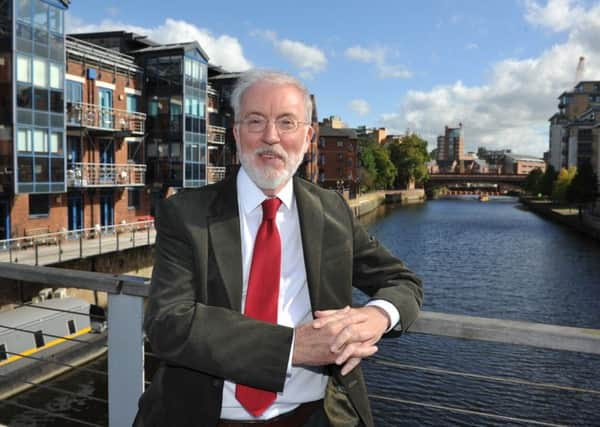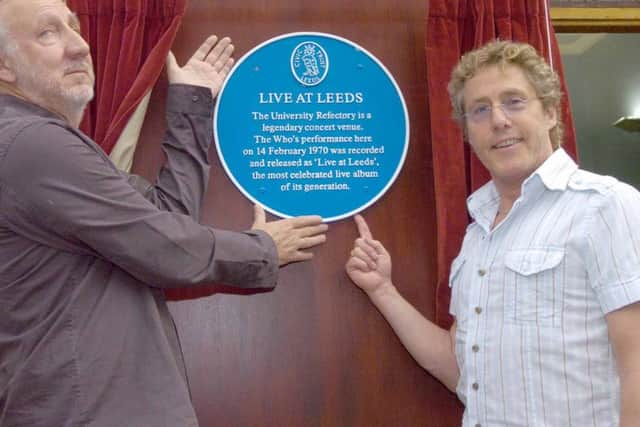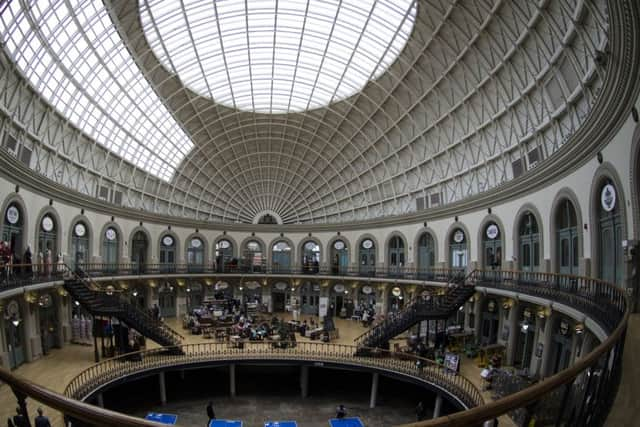Dr Kevin Grady - Leeds Civic Trust boss on how the city has changed


When Kevin Grady first arrived in Leeds in the autumn of 1969, Neil Armstrong and Buzz Aldrin had just taken a giant step for mankind and the Beatles were still top of the pops.
The world was a different place and so, too, was Leeds – the city that has been his home for more than 40 years.
Advertisement
Hide AdAdvertisement
Hide Ad“When I came to Leeds if you wanted a cup of tea and a sandwich there wasn’t much choice. There were a couple of greasy spoon cafés; other than that you had to pop into Lewis’s or Schofields to their cafeteria.


“The notion that we could become like a continental city with street cafés was seen as laughable – who’s going to want to sit outside in Leeds drinking coffee?... and now look.”
Indeed. Last year alone more than 30 new restaurants, bars and cafés opened in the city, part of the food revolution that has swept through this country over the past decade or so.
It’s just one of the dramatic changes Dr Grady has seen in the city. As director of Leeds Civic Trust he has been a tireless, and at times outspoken, champion for the city, rubbing shoulders with business and political leaders but at the same time prepared to oppose plans he and the Trust feel won’t enhance the city – even if it’s meant the occasional carpeting.
Advertisement
Hide AdAdvertisement
Hide AdNow, after 29 years in the role, he’s stepping down. “I’ve enjoyed the job and met all sorts of interesting people but I’m 66 now and I think it’s time for a younger person to take this on,” he says.


Prior to joining the Trust in 1987 he had worked as a university lecturer interspersed with a stint as a tax inspector and, more incongruously, as a conjurer under the alias of Dr Marvelo the Magician.
His great passion, though, was for urban history which prompted him to write a series of books and articles that led him to become the de facto historian of Leeds. So when the Trust, set up in 1965, needed fresh impetus he was the obvious choice. “To me it was like being handed a blank sheet of paper.”
He set about making the organisation more vocal when it came to city planning and heritage issues. With Dr Grady at the helm the Trust quickly got involved in raising awareness about the state of the River Aire which at the time was a polluted mess. The Trust backed the Eye on the Aire project and lobbied the government and Yorkshire Water, which led to a £60m clean-up operation. “This meant for the first time since the Industrial Revolution Leeds actually had a river in the city centre of the quality to sustain a good coarse fishery,” he says.
Advertisement
Hide AdAdvertisement
Hide AdAs well as supporting environmental campaigns like this, the Trust set up a committee to monitor planning applications. Another early success was preventing the south side of Boar Lane, which had been earmarked for a shopping centre, from being demolished.


The Trust was also instrumental in helping to force through a public inquiry in 1988 that prevented Kirkgate Market from being turned into a giant shopping centre. “After that our kudos shot up because we were seen as an organisation that wouldn’t be bullied.”
Dr Grady is proud, too, of the way the Trust has helped shape the city’s waterfront. “For me a key thing was getting that blend between good modern buildings and conserving heritage on the waterfront and in my 29 years one of the major achievements and a huge improvement in the city has been the regeneration of the waterfront,” he says.
“Our success over the years has been down to the fact that although we have no power developers come to tells us about their schemes and we have regular meetings with the council. So we’ve been able to influence the climate.
Advertisement
Hide AdAdvertisement
Hide Ad“Somebody once told me if you’re out on the streets shouting and marching then you’re not in the game, you’re on the outside. One of the things the Trust has done is get on the inside.”


Not that he’s taking the credit for Leeds’s transformation. For that he points to people like former civic architect John Thorp and Jon Trickett, Labour’s Hemsworth MP and former city council leader.
The role of the Trust has grown dramatically since Dr Grady took over. In addition to a planning committee that meets every fortnight to discuss key schemes or any heritage issues, it also produces guide books on the city, holds public lectures and does heritage walks. “We run Heritage Open Days in the city. This year we had 112 events over the heritage open day weekend and we also do the blue plaques which we didn’t have when I started.”
The latter have proved particularly popular and there are now 150 dotted around Leeds. “We were only supposed to do 20 and it got a bit out of hand, but there’s a real enthusiasm for them because they stimulate pride in an area.”
Advertisement
Hide AdAdvertisement
Hide AdHowever, he believes there are still challenges facing the city, not least the vexed question of public transport and the failure to get the Supertram project and latterly the Trolleybus scheme off the ground.
“There have been significant improvements to transport here but the fact is if you are a thriving modern city you’ve got to have a rapid transit system of some description.” It’s something he feels must be addressed. “We backed the Trolleybus system and were vilified for it, but our view was you have to get into the game.”
The lack of a purpose-built conference centre is another hobby horse. “If you are a big city like Leeds you should have a conference centre with exhibition facilities and the fact is until Leeds hosts a party political conference it’s not going to be up there in the big league of cities.”
He would also like to see more greenery. “We say we are the greenest city in Europe and if you take the whole district then yes we’ve got fantastic parks and people are rightly proud of them.
Advertisement
Hide AdAdvertisement
Hide Ad“But in the city centre itself we have very little green space. So there’s still a lot we can do to improve the public realm, we need more trees and we need more grass.”
It is the city’s so-called South Bank area that he believes is key to the long-term success of Leeds. “It has the potential to be the great showpiece of urban development in the country if we get it right. But you have to be careful otherwise you can end up with a load of office development and little else.”
Despite such concerns he is optimistic for the future. He points to the success of Trinity Leeds and the new Victoria Gate shopping centre that have helped make the city a top destination for those after a spot of retail therapy.
Then there’s its burgeoning arts scene. “When I started this job Quarry Hill was empty and we now have West Yorkshire Playhouse, Northern Ballet, Phoenix Dance and the Leeds College of Music, and over the last 30 years Leeds has developed a large number of cultural stars.”
Advertisement
Hide AdAdvertisement
Hide AdThe city, he says, is unrecognisable from the place he arrived in as a student. “It used to be a bit grim and gritty and when business people brought guests here they used to take them out to a country pub because it was felt there was nowhere decent to eat in the city centre, and all that’s changed.
“One of the most pleasing things looking back is had I been retiring in 2008 it would have all been doom and gloom.
“But now the economy has picked up, the confidence is there and I’m finishing on a high because we have architects and developers beating down our door to come here. The city is definitely on the up and the prospects are limitless.”
As director of Leeds Civic Trust Kevin Grady has championed the best of both old and new architecture in the city. Here’s his top 10:
Heritage Buildings
The Corn Exchange
The Victoria Quarter
Temple Mill
Kirkgate Market
The Grand Theatre
Modern Buildings
Advertisement
Hide AdAdvertisement
Hide AdThe Design Innovation Centre, 46 The Calls (viewed from the waterfront)
Prince’s Exchange (by Leeds Station)
KPMG offices, Sovereign Street
Laidlaw Library, University of Leeds, Woodhouse Lane
Wellington Place office development.